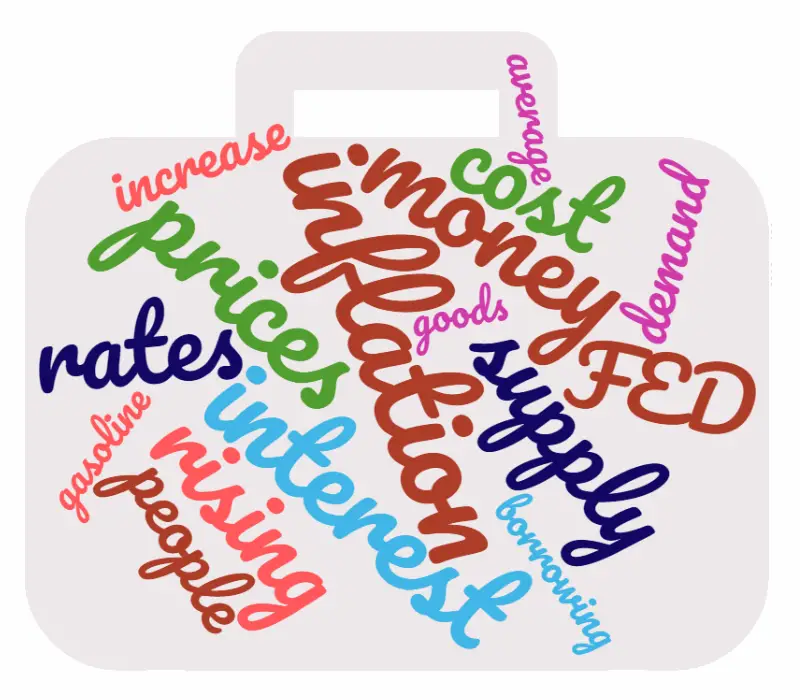
In addition to sounding similar interest and inflation are amazingly inter-related. And in effect interest rates incorporate a “negative feedback loop” into inflation.
When people think of the word inflation they generally think of how inflation affects them. They see rising prices of common commodities like gasoline or food and worry about the rising cost of living. But that is simply the effect of inflation and it is technically referred to as “price inflation” but the cause of price inflation itself is actually much more complicated.
In the short run, prices can rise due to a shortage in supply, such as a gasoline shortage caused by a refinery having to shut down due to a hurricane. In the medium term, if gasoline demand outstrips total refinery capacity prices will also rise but eventually more refineries will be built and prices will come down again.
On the other side of the supply/demand equation we have the idea of “demand-pull inflation” which is that if there is a strong demand for a specific item then prices will rise. But once again this is only a short term phenomenon. Because generally production will increase and competitive products will arise to drive the price back down. The only way this condition can continue is if a single company has a monopoly or supply is in some other way restricted.
Causes of Longer Term Inflation
So far we have only discussed short-term or temporary price inflation. Systemic or longer term inflation is primarily caused by an increase in the money supply and is called monetary inflation.
This can be illustrated by a simple example:
If we have an island with 5 people, 5 products and 5 dollars the average price of each item will be $1.00. But if suddenly a suitcase washed ashore with $5 more dollars in it, initially the finder would be rich, but before long the average price of goods would have increased to $2.00 and the island would have experienced 100% price inflation due to 100% monetary inflation. Interestingly, if the suitcase had contained $500 the island would experience hyperinflation and the average price of the goods would become $101.
What is Interest?
Interest has been called “the cost of money” but more accurately it is “the cost of renting (borrowing) money”. When you borrow money you pay “rent” or “interest” for the length of time that you have the money. The price that you pay is dependent on several factors. Typically we think the interest rate is based on our “credit rating” and in a small localized manner it is. But on a larger scale interest rates also depend on supply/demand. If a lot of people want to borrow for either personal or retail business loans and not many people want to lend, interest rates will be high and if lots of people want to lend and not many want to borrow interest rates will be lower.
What about the FED?
The U.S. Federal Reserve (aka. the FED). is tasked with setting the “discount rate”. The discount rate is the interest rate charged to commercial banks and other financial institutions when they borrow from the Federal Reserve Bank. Interestingly, the FED also controls the money supply through a variety of complex mechanications. And if the FED pumps up the money supply (in an effort to stimulate the economy) before long prices will begin to rise (i.e. price inflation). Then rather than decrease the money supply the FED will often raise interest rates in an effort to dampen inflation. But rising inflation will naturally increase interest rates as well.
How does Rising Inflation Raise Interest Rates?
As prices increase, lenders begin to realize that by the time they get their money back, they won’t be able to buy as much with it as they would have had they just spent it in the first place. For example, if they are earning 2% on their money but prices rise 5% they have actually lost 3% in purchasing power. So lenders will demand 7% or more for their money or simply choose not to lend at all. This decreases the supply of loans and further drives up the cost of borrowing. So inflation naturally drives up the cost of everything including the cost of money. This is in addition to any upward pressure the FED puts on interest rates.
How does Raising Interest Rates Lower Inflation?
As interest rates rise, the cost of borrowing increases. So consumers have to pay more for the interest on their credit cards and for their mortgages so they have less disposable income. So they cut back on luxuries. This decreases overall demand for goods thus forcing sellers to cut prices in order to liquidate their inventory.
So as inflation rises interest rates also rise which puts downward pressure on inflation. Thus, we can see how rising interest rates creates a “negative feedback loop” for inflation.
You might also like:
- Oil Refineries in the United States
- 3 Ways Natural Disasters Affect Fuel Prices Everywhere
- Gasoline vs. Crude Oil Prices (Chart)
- Inflation and Velocity of Money


Thank you so much !!! This helped me a lot XD
Do you have any video of that? I’d care to find out more details.